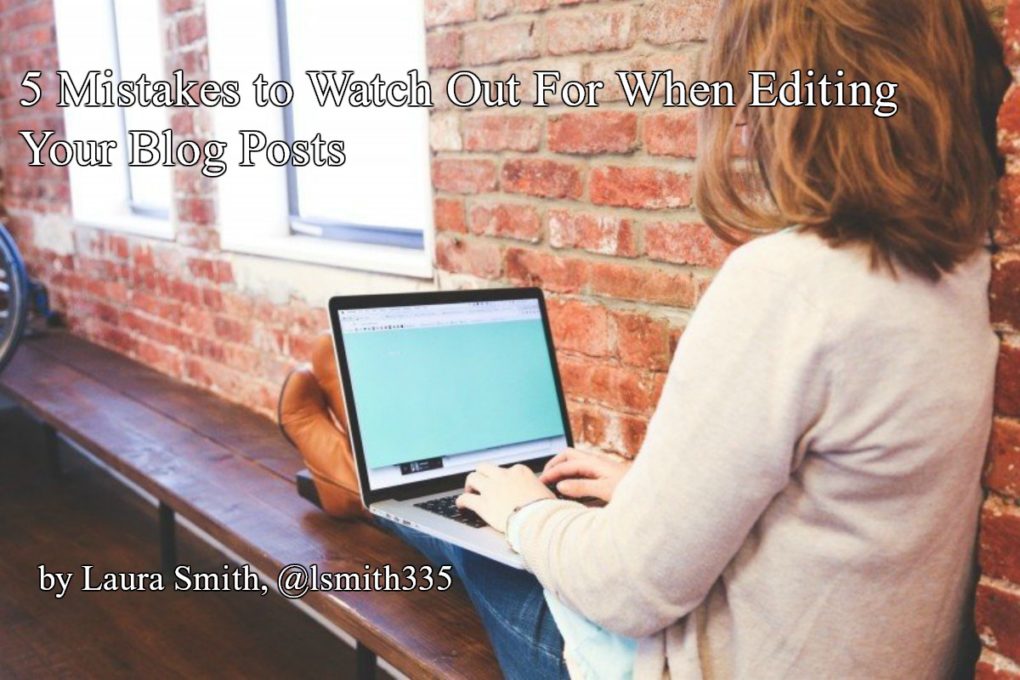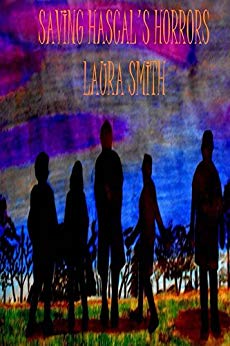by Laura Smith, @lsmith335
Editing Is Crucial
Let’s face it, even a good first draft can look like a hot mess when it’s first read. Every decent English teacher I’ve ever had has marked up my rough draft with a red pen and then said, “good job.” But we’re not in English class anymore, and we have to take the red pen to our work ourselves. That means catching everything from basic typos to cutting entire sections that don’t flow with the rest of the piece. It also means throwing away some basic knowledge that I learned in school and adapting to the age of writing online.
I have to admit, this was the most self-aware piece I’ve ever written. I had to make sure I was following my own advice as I was giving it. After all, what’s the point of offering advice if you’re not going to follow it yourself? Below are five of the major elements that I review when I’m editing my blog articles.
1. Long and Wordy Sentences and Paragraphs
Reading on a screen is much different from reading from a piece of paper. Forget everything your elementary school teachers taught you about writing paragraphs. If you can make your point in two sentences, move onto the next paragraph.
Help your readers out by breaking up your paragraphs into shorter pieces. A quick scroll through the article will cause them to notice the length right away. They’re more likely to read three paragraphs that are each three sentences long than one paragraph that is nine sentences long. It’s like cutting a peanut butter and jelly sandwich into fourths rather than in half to make a kid believe that they’re eating a smaller amount of food.
Also, vary your sentence length. Can you split a long sentence into two shorter ones? Are you over-explaining something that the reader already understands? Can you provide a specific example rather than rephrase what you just said? Read your work aloud to make sure you can say the sentence in one breath. If not, your own voice will tell you where you need to pause.
2. Trying To Cram In A Good Point That Doesn’t Fit With The Rest Of The Article
Notice when you’re veering off-topic. When we’re drafting a piece, we tend to write down everything that comes to mind, and that’s good. But you have to be willing to cut anything and everything if you need to. This might be because of word length limits or the fact that the point has nothing to do with the rest of the paragraph or article.
In one recent piece that I wrote, I was describing the things that writers do to distract themselves from writing. I started naming specific tasks and chores, like changing light bulbs or taking old clothes to the Goodwill. It felt like a lighthearted and relatable point. However, not only did it take up a crucial chunk of my limited word count, but it was redundant and kept the reader from getting to the point of that section, which was to take time to organize your files. So, I shortened the paragraph to one sentence and got to the actual point of the section much faster.
If a stray sentence or paragraph fits better in another part of the article, move it. Otherwise, save it for a different article, or delete it all together. Even a solid point can distract from the focus of the piece and make the article look choppy and disorganized to a reader.
3. Using a Bad Title
Titles are hard for me. Whether it’s the title of a book, an article, or a section of a piece, I stress over whether the title is too generic to capture a reader’s attention or too obscure to let the reader know what the article is about. Luckily, there are free tools to help with this, at least when writing blogs and articles.
One such tool is the Headline Analyzer. Here, you type in the rough title that you have come up with and the category of the piece, and the site will tell you how “good” it is. You want to aim for a 25% effectiveness or higher. You can then tweak words and placement, and run it through again to compare with your last score. Here is the link to the site: https://www.aminstitute.com/headline/
4. A Rushed or Boring Introduction and Conclusion
When I blog, I like to write a meaningful introduction and conclusion to most of my pieces, even if those are the parts that a lot of readers like to skip. Still, my formal training taught me to summarize and reiterate your points at the beginning and end of your essays so if a reader does take a look at it, it has to be gripping.
Start with a personal story, ask a question, or tell a joke, depending on the topic. Don’t ramble on. Get to your list or the meat of your article fast. Keep it short so that readers don’t feel the need to scroll past the beginning or stop at the conclusion. Don’t think of these sections as something to get through. Use them to put your own personal flair on the piece.
5. Inconsistencies in Formatting and Word Choice
You have to pick a format and stick with it. Don’t put some important words in bold and others in Italics. Don’t start numbering sections and bulleting others. Don’t start with a quote at the beginning of some of your sections and then stop halfway through. Don’t use jargon that you haven’t explained or examples that are confusing or take too long to describe.
If you’re reviewing a movie, don’t start calling a character by their nickname without explaining that it is their nickname the first time you use it or providing the names of actors who played certain characters but not others. Make sure that you are using the right format for the titles of novels, short stories, songs, movies, TV shows, etc. Don’t assume you are a master of English mechanics. Look up anything that you’re not sure of on trustworthy sites.
When you’re looking up pictures, make sure they fit in with the topic of the piece. Don’t try to make it work with a creative caption. Use high quality images so that readers know what they’re looking at and don’t think there’s something wrong with their screen.
Conclusion
Using these five editing tips are going to lower your chances of kicking yourself when you find an error or weakness in your piece after it is published. It’s devastating to find imperfections in your perfect work, and you most likely will, but at least they will be small blemishes, not giant warts. So, take your red pen and start marking up that page before you hit publish!
 Laura Smith is the self-published author of three middle grade books, a volunteer editor for LitPick (a student book review website), and a blogger for HubPages. When she isn’t writing, she’s shopping, drawing, working on projects around her house, and spending time with her family.
Laura Smith is the self-published author of three middle grade books, a volunteer editor for LitPick (a student book review website), and a blogger for HubPages. When she isn’t writing, she’s shopping, drawing, working on projects around her house, and spending time with her family.
5 Tips for Better Blogging from @lsmith335 : Click To Tweet
Photo on Visualhunt.com



Thanks for Headline Analyzer – that will definitely help! Rarely too wordy but I know I use the wrong words sometimes.
I thought it looked like a useful tool, too. I’ve gotten better about reducing the number of words in the heading (most of the time, ha).
It has been immensely helpful to me. I’m terrible at titles. I hope it helps!
These are all very helpful tips, so thanks. One of the things I love about blogging is that it’s good, regular discipline for writing. And those tips help in that, too!
That’s definitely a good reason to blog…helps with that writing habit.
Great tips. I didn’t know anything about the headline analyzer but will check it out.
Hope it’s helpful, Natalie!
It’s great to meet Laura. Titles are very important to me. I spend far too much time thinking of them. I had a contest for Salem’s Daughters. Arlee Bird won it.
That’s a cool way to do it, Stephen!
I’ve learned recently how important a title is not only in drawing in readers but also in showing up in online searches. So, they are worth the extra thought. Thanks for reading!
These are great tips, valuable for any blogger.
Thanks for putting this together, Laura!
Thanks for coming by, HRD!
Thanks for reading! Hope it helps!
Hi Elizabeth and Laura – I like the first section … about letting the reader be able to read the posts comfortably. But these are all such sensible points … I’m hopeless with titles as I don’t want to highlight myself too much – when the time comes I must take cognisance of the title aspect.
Such a useful post for us all to read … thanks – cheers Hilary
Readability is so important, isn’t it? It really does help to have paragraphs broken down and have headings throughout the post.
Thanks for reading! I’ve had some really helpful instruction lately on how to write effectively online, and I was glad to have some advice to pass along.
[…] Big thanks to mystery writer Elizabeth Spann Craig for featuring me as a guest writer on her blog today. I wrote a post for her called “5 Mistakes to Watch Out For When Editing Your Blog Posts.” You can read it here: https://beta.elizabethspanncraig.com/uncategorized/blogging-mistakes/?fbclid=IwAR1f82mO_LbNlptS1PcccO6NGK… […]